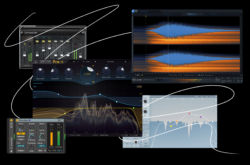“For me, templates have changed the game,” Kenny Beats tells us.
“I was creating templates before I even knew they were templates. I would just set up things so that every time I opened up my program—whether I was using FL or Logic or Ableton—they were always there. I used to rely on my file organization, keeping certain sounds together and having all of those things in one place, because I didn’t even know how to set up the DAW in the right way. Luckily, now I use Ableton, and in Ableton 11 specifically, they make templates one of the easiest things to set up. Now, anybody can make one however they want to make one.”
“When I open my very lonely, very boring desktop, I’m trying to get right to it,” he continues. “I might have an idea that I sprinted in here to make, or there might be an artist who only has an attention span of five minutes before they forget about the thing that they said they really liked… So, if you’ll notice, as soon as I click my DAW, the first thing that comes up is my main studio template. What’s in my template? Why do I have it set up like this? What do all of these things mean? Let’s go through it one by one.”
In the video above, Kenny Beats gives us a sneak peak into his Splice Skills lessons, covering tips like the one above about the importance of creating templates to how to find your blind spots, why you shouldn’t underestimate the value of stock plugins, and more. Check it out for some great standalone insights, and consider exploring his full lessons if you’re interested in diving even deeper.
Learn more about engineering, tracking, session organization, and more with Kenny Beats:
December 2, 2021


